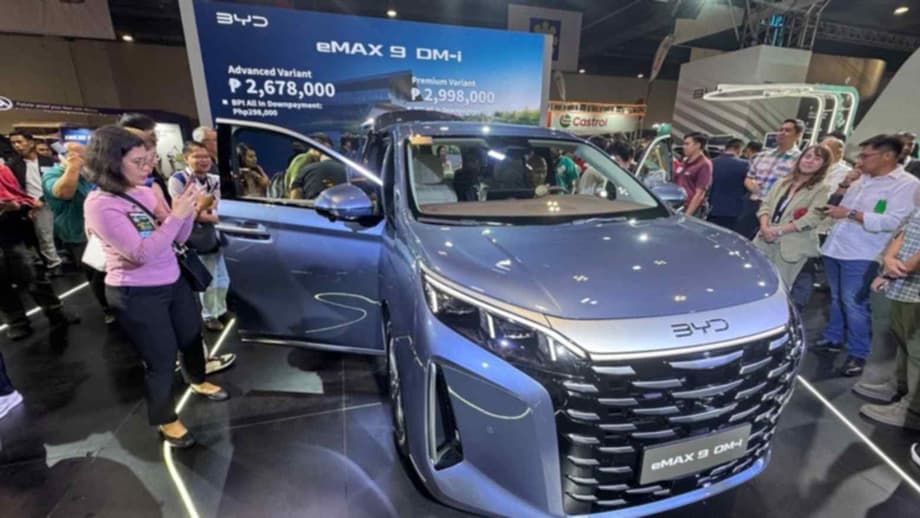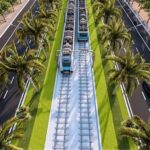A turning point for electric mobility in the Philippines
Big Philippine business groups are moving fast to bring Chinese and Vietnamese electric vehicles to local roads, reshaping a car market long dominated by Japanese brands and their gasoline and hybrid lineups. These new alliances go well beyond opening showrooms. They combine distribution, service and charging infrastructure, and even ride hailing fleets. That mix can lower ownership risk and make electric models practical for daily use. The pace of activity has quickened as Chinese automakers look overseas for growth and Vietnam’s VinFast exports its full ecosystem approach. For the Philippines, the result is a rare window to speed up electrification by tapping regional partners with capital, technology, and a readiness to scale.
The shift is also strategic. The Philippines wants to reduce oil dependence and reach climate goals, yet many buyers still worry about price, charging, and service. Conglomerates control property, retail, utilities, and logistics, so they can stitch together the pieces a new technology needs. Deals with Chinese and Vietnamese players bring affordable EVs, nationwide service plans, and charging solutions to malls, neighborhoods, and transport hubs. If these partnerships deliver on coverage and cost, they will expand choice for consumers and push the market beyond early adopters.
Who is partnering with whom
A growing cast of local and regional companies are aligning. Vietnamese automaker VinFast is building a service backbone with Philippine partners and is pairing that network with charging providers and a new electric taxi push. The country’s largest power distributor, Meralco, has signed with Vietnamese firms to plan EV chargers and electric taxi hubs. Chinese brands, led by BYD, are scaling distribution and retail presence with established Philippine groups. Property and retail giants are preparing to host more chargers and brand displays, turning high traffic spaces into entry points for electric mobility.
Vietnamese moves: VinFast builds service muscle
VinFast is expanding swiftly in the Philippines with a focus on reliability and customer support. It signed a memorandum of understanding with Motech to upgrade 63 service centers and train technicians to VinFast standards. The company has also announced agreements with Goodyear Philippines, Tire King and Rubber Products, Power Tread Services, and Marcjan Cavite. These partnerships target more than 100 authorized service workshops across the country in 2025, with strict requirements for facilities, equipment, and staff qualifications. The goal is clear, give buyers confidence that maintenance, repairs, and genuine parts are always within reach.
The brand is pairing service with charging and model launches. VinFast introduced the VF7 locally and bills the Philippines as the first market outside Vietnam to offer it. Its charging affiliate, V Green, has regional expansion plans and has worked with partners to accelerate charger deployment across Southeast Asia, including the Philippines. Separate announcements have highlighted ambitions for thousands of charging ports in the region and a dedicated push in the Philippine market. VinFast is also bringing a battery subscription option that lowers the upfront vehicle price and addresses worries about battery degradation or replacement cost.
Utility led charge: Meralco and Vietnamese partners
Meralco has teamed up with V Green Global Charging Station Development and Green and Smart Mobility, both based in Vietnam, to develop EV infrastructure solutions in Metro Manila and other cities. The plan covers site assessments, a scalable charging network, and pilot hubs for electric taxis. It also includes technical cooperation to speed up network rollout and improve service reliability. The combined approach links the grid operator, a charging specialist, and a fleet innovator that already runs an electric ride hailing service in Vietnam using VinFast cars.
V Green’s chief executive Nguyen Thanh Duong framed the collaboration as a region wide push to make charging accessible in the Philippines. He said the companies want to move quickly from planning to deployment.
This partnership marks a milestone in accelerating the green mobility revolution in Southeast Asia and aims to deploy a reliable and accessible charging network across the Philippines.
Meralco chair and chief executive Manuel V. Pangilinan emphasized that the utility sees transport electrification as part of its service mission and long term investment plan for consumers and businesses.
The initiative aligns with our vision of a future ready and inclusive transportation ecosystem for all Filipinos.
Chinese brands gain ground through local giants
Chinese automakers are securing distribution and retail space through Philippine conglomerates that already run nationwide dealership and mall networks. BYD’s expansion under a local automotive group has brought more showrooms, test drives, and brand visibility. Big property owners and retailers are also preparing locations for more EV chargers, making malls and mixed use estates natural hubs for charging and education. These commercial footprints help Chinese makers, many of which are cost competitive and quick to refresh models, reach buyers beyond early adopters and into mainstream city and provincial markets.
Why these partnerships make sense now
The local market is price sensitive and has been slow to embrace full battery electric cars. Japanese brands still dominate, and they have prioritized hybrids. That is changing, because new players are compressing costs and removing friction. The Electric Vehicle Industry Development Act (EVIDA) gives a policy base. It encourages investment and provides perks that make EVs easier to own. Government targets call for a rapid scale up of chargers and rising EV penetration over the next 15 years.
Registrations of electric vehicles, including hybrids, have increased. Recent data show nearly 30,000 EVs on the road by mid 2025, up from prior years. The industry also reported more than 20,000 EV sales within a year, with hybrids leading the mix. The Department of Energy and other agencies have set goals for 7,300 public charging points by 2028 and over 20,000 by 2040. Authorities and industry groups have floated an aspiration for at least 2.5 million EVs on Philippine roads by 2040. These markers may shift, but the direction is set.
How new business models lower the cost of entry
One barrier has been the sticker price. New financing tools and ownership models aim to ease that. VinFast plans a battery subscription option that separates the car price from the battery, which is the most expensive component. Owners pay a monthly fee for the battery, similar to a service plan, which helps reduce the initial payment. The company couples this with long warranties and dense service coverage to address reliability concerns. Other brands are pushing down prices by using modular platforms, in house battery supply, and a growing pool of parts made in Asia. Insurance providers are adapting policies to cover traction batteries and advanced driver systems.
Demand will also come from fleets that buy at scale. Ride hailing operators and corporate shuttle providers are testing electric models for lower operating cost per kilometer. Utilities and property groups can bundle charging with energy services, offering businesses predictable rates and maintenance plans. These changes make electric fleets attractive for companies that move people or goods every day.
What drivers will experience on the ground
Service coverage is the first visible change. Partner workshops in major cities and regional centers will carry certified tools, trained technicians, and direct access to genuine parts. That matters in a new market where owners want assurance on repairs, software updates, and battery health. VinFast’s plan for more than 100 authorized workshops builds redundancy into the network so drivers have options if their nearest site is busy. Chinese brands are also expanding parts depots and mobile service vans to raise uptime and cut wait times for spares.
Charging will feel familiar if it is placed where people already spend time. Supermarkets, malls, and office parks can host destination chargers for top ups during errands or work hours. Expressways and intercity corridors need fast chargers for long trips. The basic options break down into alternating current chargers, which are slower and suited for home and workplace use, and direct current fast chargers, which can add hundreds of kilometers in under an hour depending on the vehicle. App based payments and station locators make planning simpler, while roaming agreements let drivers use more than one network.
The regional and trade backdrop
These moves in the Philippines sit inside a bigger shift across the Association of Southeast Asian Nations (ASEAN). China’s factories are producing more vehicles, batteries, and solar equipment than its domestic market can absorb. A growing share is flowing to ASEAN, which has become a top export destination and a base for new plants. This wave brings lower prices and quicker model cycles. It also puts pressure on local suppliers and raises the risk of trade measures from advanced economies aimed at products with Chinese content.
For the Philippines, the opportunity is to attract investment and know how while building local capacity and skills. The risk is that too much of the value chain remains overseas, which could limit job growth and make exports vulnerable to rules of origin and other restrictions. Policymakers will weigh these trade offs while trying to secure stable access to parts, batteries, and charging systems. Regional partners are already responding by promising higher local content and by setting up assembly and component plants inside ASEAN to meet compliance rules and shorten supply chains.
Infrastructure and the grid
Reliable power and smart placement of chargers will determine how fast EV use expands. Meralco’s involvement brings planning experience on load management, site selection, and safety standards. Cities need clusters of chargers near transport hubs, parking structures, and major roads, while suburban areas benefit from destination charging at malls and supermarkets. Time of use rates, which make electricity cheaper during off peak hours, can nudge home and fleet charging to night time. That helps the grid absorb new demand without large upgrades all at once.
Hardware standards and training will matter. Chargers and vehicles communicate using standard protocols so energy flows safely. Direct current fast chargers require careful attention to cooling, connectors, and maintenance schedules. Sites must be designed for heat, rain, and flood risk that are common in the Philippines. Service partners will need certification programs for technicians who work with high voltage systems. These details sound technical, but they are the foundation of a dependable network.
How incumbents are responding
Japanese automakers still lead sales and have strong dealerships. They are pushing hybrids as a bridge technology and preparing new full battery models where it makes sense. Hybrids remain the volume leader for now, given price points and the familiarity of fuel stations. Korean and American brands are also expanding electric lineups. The competitive response will likely blend more hybrid choices under 2 million pesos, selective battery models for metro buyers, and a stronger push on service quality to retain customers.
Local manufacturing is on the table. Authorities want parts makers and vehicle assemblers to set up in the Philippines to add jobs and deepen skills. That could start with components, such as wiring harnesses or interior modules, and gradually move to battery packs and final assembly as the market grows. Clear incentives, stable policy, and predictable permitting will guide those decisions.
What would success look like
Vietnam’s experience offers a simple lesson. When automakers, utilities, property developers, and government align, the user experience improves quickly. Drivers buy when they see chargers where they live and work, when service centers are nearby, and when warranties and financing reduce risk. The Philippines can move in the same direction by using the scale and reach of its conglomerates to knit together vehicles, charging, service, and fleet demand. That is what current partnerships aim to deliver.
- Streamline permits for chargers and standardize technical rules across cities and regions.
- Support local parts production and training so more value stays in the country.
- Encourage fleet adoption in ride hailing, logistics, and corporate shuttles to boost utilization.
- Expand consumer incentives tied to scrappage or fleet turnover to get older vehicles off the road.
- Set fair pricing and service quality benchmarks for public charging to protect consumers.
Industry groups expect steady growth in electric vehicles in the next few years, helped by rising consumer acceptance, policy support, and a denser charging network. If the current partnerships execute on schedule, buyers will see more models, better service coverage, and shorter queues at chargers. That is how a niche technology becomes a normal choice for everyday transport.
Key Points
- Philippine conglomerates are partnering with Chinese and Vietnamese EV companies to accelerate electrification beyond early adopters.
- VinFast is building a nationwide service network with Motech and other Philippine partners, targeting more than 100 authorized workshops.
- Meralco signed with Vietnam’s V Green and Green and Smart Mobility to plan EV charging networks and electric taxi hubs.
- Charging expansion includes regional plans for thousands of ports, with V Green focused on growth in the Philippines.
- Policy under the Electric Vehicle Industry Development Act (EVIDA) supports investment, with targets for 7,300 public chargers by 2028 and over 20,000 by 2040.
- EV registrations reached nearly 30,000 by mid 2025, with more than 20,000 sales in a year and hybrids leading the mix.
- Chinese brands gain distribution through local groups, while Vietnamese players bring integrated models, charging, and fleet solutions.
- ASEAN faces a surge in Chinese exports and growing trade scrutiny, so local content and regional manufacturing are in focus.
- Grid planning, standards, and technician training are critical to a dependable charging network in Philippine conditions.
- Japanese incumbents push hybrids while preparing full EVs, and local manufacturing ambitions depend on stable policy and clear incentives.




